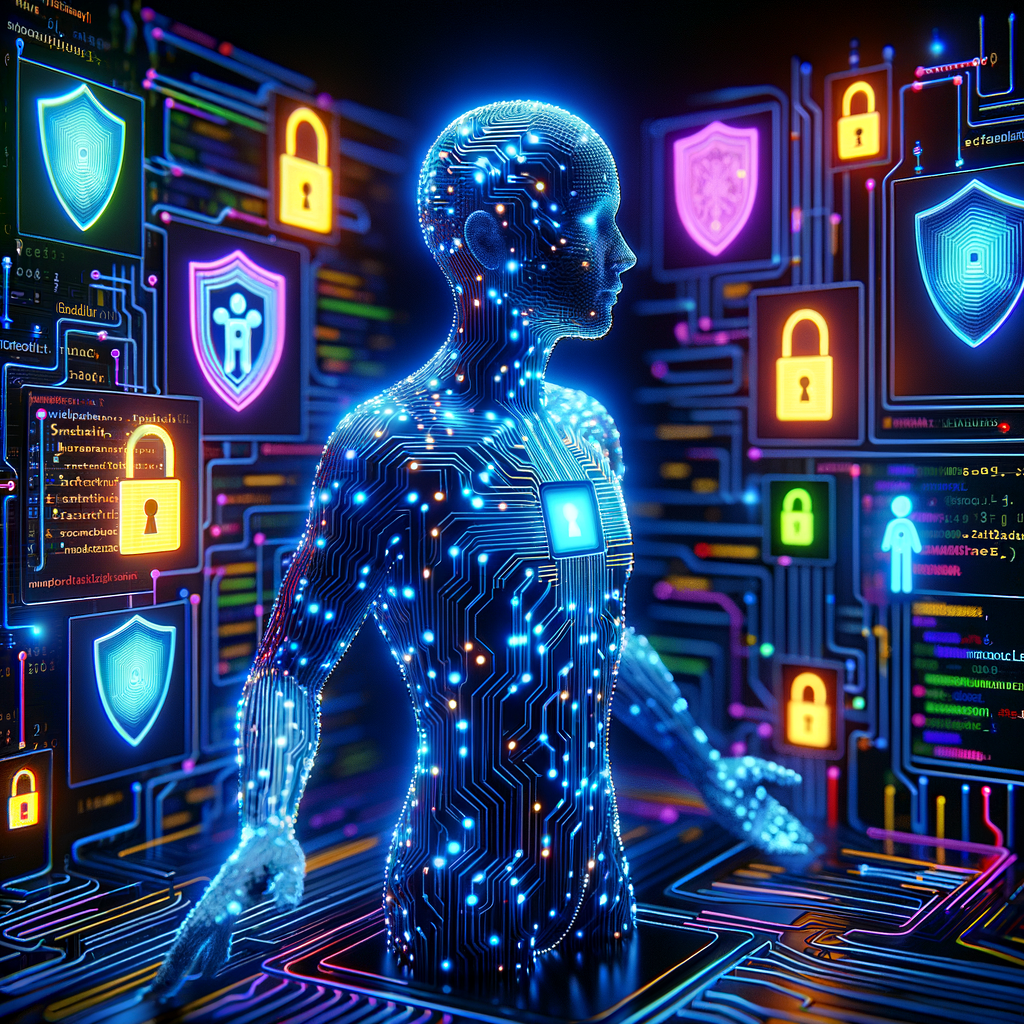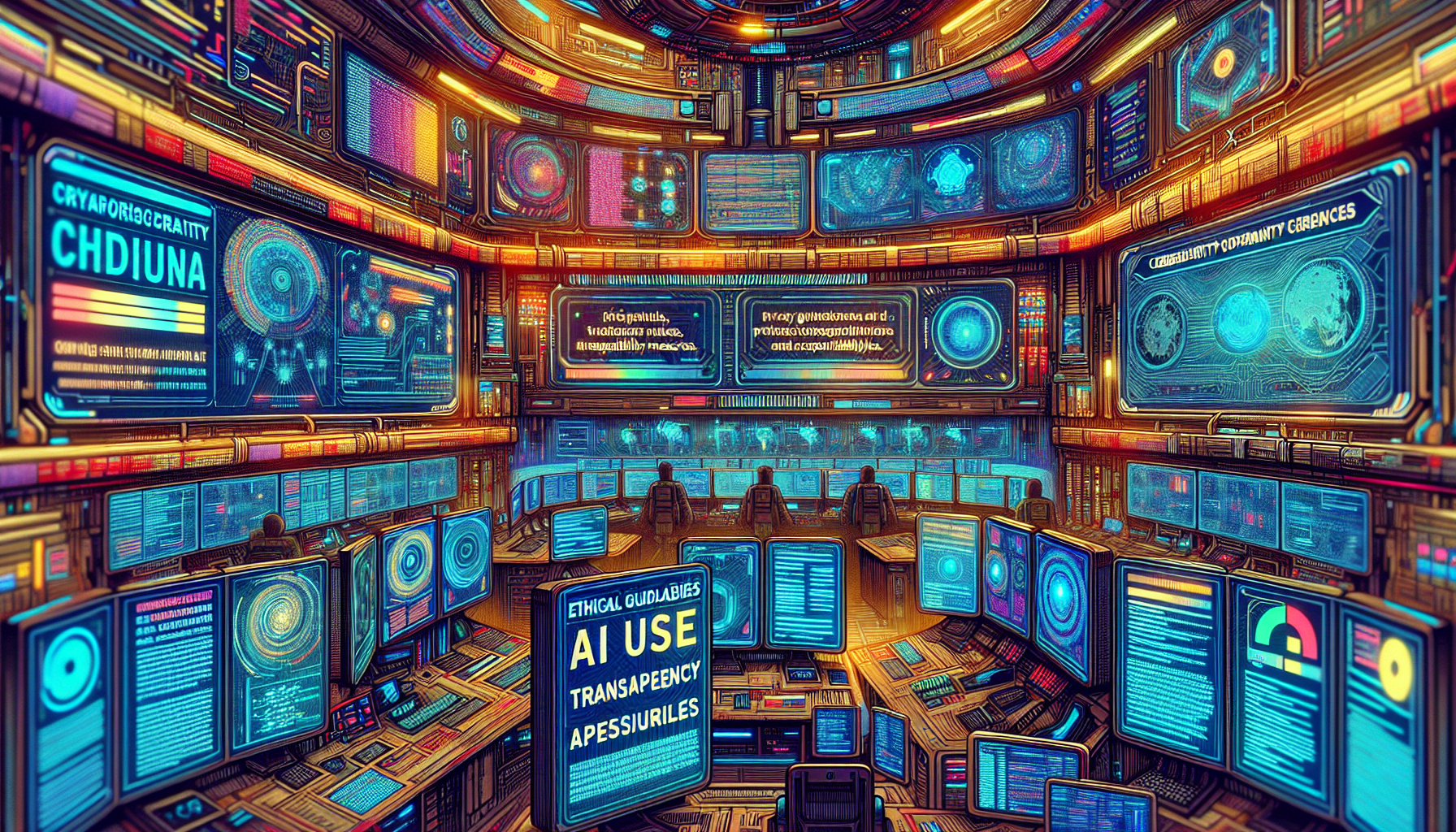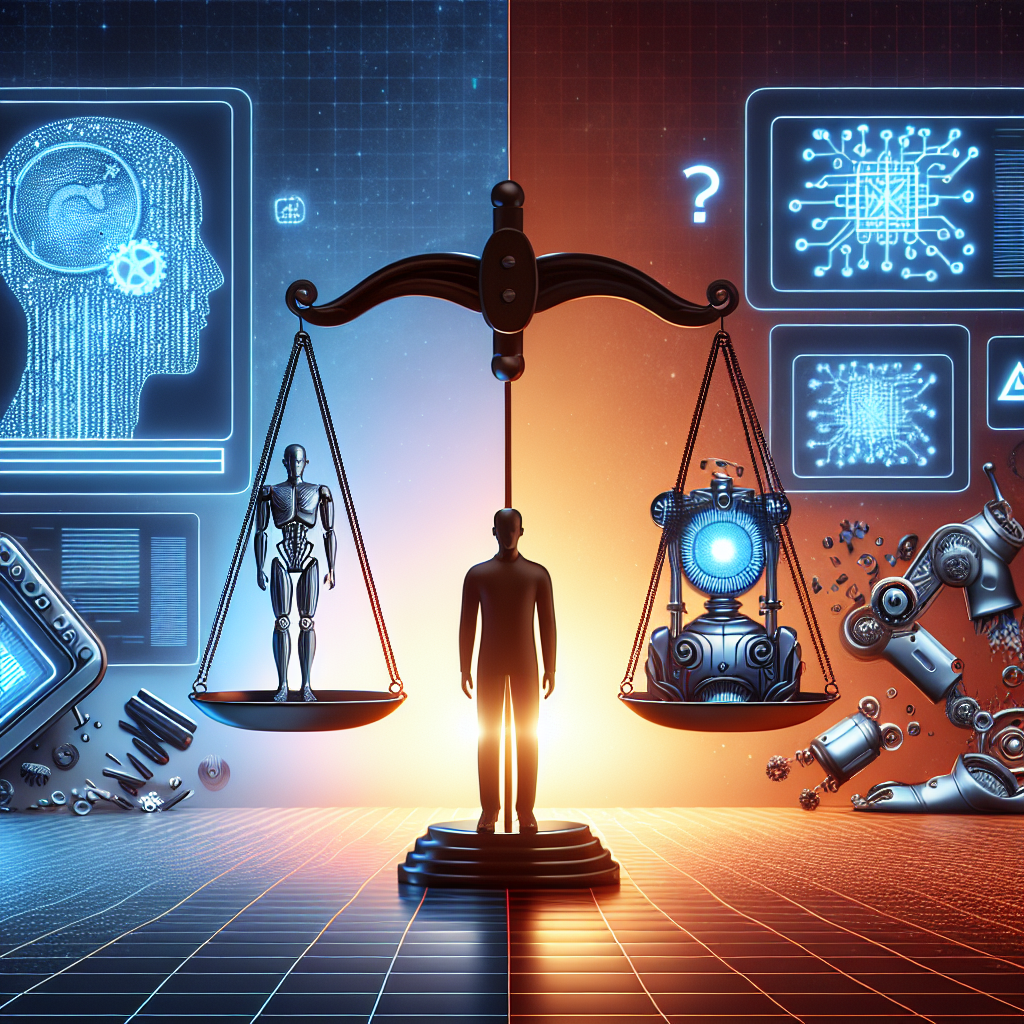
Outline
- 1. AI for Cyber Security Professionals
- 2. Understanding AI in Cybersecurity
- 3. The Role of AI in Enhancing Cybersecurity
- 4. How AI Assists Cybersecurity Professionals
- 5. AI-Powered Tools and Technologies in Cybersecurity
- 6. AI and Cyber Threat Hunting
- 7. Benefits of AI in Cybersecurity
- 8. Challenges and Limitations of AI in Cybersecurity
- 9. The Future of AI in Cybersecurity
- 10. AI and Cybersecurity Workforce: Collaboration, Not Replacement
- 11. Case Studies: AI in Action in Cybersecurity
- 12. Ethical Implications of AI in Cybersecurity
- 13. AI and Regulatory Compliance in Cybersecurity
- 14. Best Practices for Cyber Security Professionals Using AI
- 15. Conclusion
This article discusses the crucial role of AI in cybersecurity, focusing on how it improves threat detection, predictive analysis, and incident response. It highlights AI-powered tools like machine learning and deep learning, examines the benefits and challenges of AI, and underscores the need for collaboration between AI and human expertise in protecting digital landscapes.
AI for Cyber Security Professionals

In today’s digital landscape, where cyber threats are increasingly sophisticated and relentless, artificial intelligence (AI) has emerged as a game-changer in the field of cybersecurity. For cybersecurity professionals, AI is not just a buzzword—it's an indispensable tool that enhances their ability to protect critical systems and data. This article delves into the role of AI in cybersecurity, how it assists professionals in their day-to-day tasks, the challenges it presents, and the future of AI in this critical domain.
Understanding AI in Cybersecurity

What is AI?
Artificial Intelligence, or AI, refers to the simulation of human intelligence in machines that are programmed to think, learn, and adapt. In the context of cybersecurity, AI leverages advanced algorithms and models to analyze vast amounts of data, identify patterns, and make decisions with minimal human intervention.
Types of AI Used in Cybersecurity
AI in cybersecurity primarily includes machine learning, deep learning, and natural language processing (NLP). These technologies enable cybersecurity systems to automatically learn from data, improve over time, and efficiently respond to new threats.
The Role of AI in Enhancing Cybersecurity

AI for Threat Detection and Response
AI excels in identifying and responding to cyber threats faster than traditional methods. By analyzing patterns and anomalies in network traffic, AI can detect suspicious activities and respond in real-time, minimizing potential damage.
Predictive Analysis with AI
One of AI’s most powerful applications is predictive analysis. By analyzing historical data, AI can anticipate future cyber threats, enabling organizations to bolster their defenses proactively.
AI in Incident Response and Management
When a security breach occurs, time is of the essence. AI can assist in incident response by rapidly identifying the root cause, containing the threat, and suggesting remediation steps, thereby reducing the impact of the breach.
How AI Assists Cybersecurity Professionals
Automating Routine Tasks
AI can automate many routine cybersecurity tasks, such as monitoring network traffic, updating threat intelligence databases, and scanning for vulnerabilities. This allows cybersecurity professionals to focus on more complex and strategic activities.
Improving Accuracy in Threat Detection
AI enhances the accuracy of threat detection by reducing the number of false positives and negatives. This precision is crucial in ensuring that cybersecurity teams do not overlook real threats or waste time on benign incidents.
Enhancing Decision-Making Processes
AI provides cybersecurity professionals with actionable insights, helping them make informed decisions quickly. By analyzing vast amounts of data in real-time, AI enables faster and more effective decision-making.
AI-Powered Tools and Technologies in Cybersecurity

Machine Learning in Cybersecurity
Machine learning, a subset of AI, involves training algorithms on large datasets to recognize patterns and make predictions. In cybersecurity, machine learning can identify new types of malware and other threats that have not been previously cataloged.
Deep Learning and Neural Networks
Deep learning, which uses neural networks with multiple layers, allows for more sophisticated analysis of data. In cybersecurity, deep learning models can recognize complex patterns in data that might indicate an advanced persistent threat (APT) or other sophisticated attack vectors.
Natural Language Processing (NLP) for Threat Intelligence
NLP enables machines to understand and process human language. In cybersecurity, NLP can analyze threat reports, news articles, and other text-based sources to extract relevant threat intelligence and provide context for ongoing investigations.
AI-Driven Security Information and Event Management (SIEM) Systems
SIEM systems collect and analyze security-related data from various sources. AI enhances SIEM systems by improving their ability to detect and prioritize threats, enabling faster response times and reducing the burden on cybersecurity teams.
AI and Cyber Threat Hunting

Understanding Cyber Threat Hunting
Cyber threat hunting is a proactive approach to detecting cyber threats that may have bypassed traditional security measures. Instead of waiting for alerts, threat hunters actively search for signs of malicious activity.
How AI Improves Cyber Threat Hunting Efficiency
AI improves the efficiency of threat hunting by automating the analysis of vast amounts of data, identifying subtle indicators of compromise (IOCs), and suggesting potential attack vectors that human analysts might overlook.
Benefits of AI in Cybersecurity
Faster Threat Detection and Mitigation
AI’s ability to process data at high speeds enables faster detection and mitigation of cyber threats, reducing the time attackers have to cause damage.
Reducing Human Error
By automating routine tasks and decision-making processes, AI reduces the likelihood of human error, which is often a critical factor in security breaches.
Scalability and Flexibility
AI-powered systems can easily scale to handle the increasing volume and complexity of cyber threats. They are also flexible, adapting to new threats as they emerge.
Handling Complex Cyber Threats
AI is particularly effective at handling complex and sophisticated cyber threats, such as APTs, by analyzing multiple data sources and recognizing intricate patterns that indicate malicious activity.
Challenges and Limitations of AI in Cybersecurity

False Positives and Negatives
Despite its advantages, AI can sometimes generate false positives (incorrectly identifying benign activities as threats) or false negatives (failing to detect actual threats). These errors can undermine the effectiveness of AI in cybersecurity.
Dependency on Data Quality
AI models rely heavily on the quality and quantity of data they are trained on. Poor-quality data can lead to inaccurate predictions and assessments, limiting AI’s effectiveness in cybersecurity.
Ethical Concerns and Bias in AI
AI systems can inherit biases present in the data they are trained on, leading to unfair or discriminatory outcomes. This raises ethical concerns, particularly in areas like surveillance and privacy.
AI vs. Advanced Persistent Threats (APTs)
APTs are sophisticated and stealthy threats designed to evade detection over extended periods. While AI is improving in detecting APTs, these threats continue to challenge AI’s capabilities due to their complexity and adaptability.
The Future of AI in Cybersecurity

Emerging AI Technologies in Cybersecurity
As AI continues to evolve, new technologies such as autonomous agents, quantum computing, and AI-powered blockchain solutions are expected to revolutionize cybersecurity, offering even more robust defenses against cyber threats.
The Evolution of AI Algorithms
AI algorithms are becoming increasingly sophisticated, enabling them to detect and respond to even the most subtle cyber threats. This evolution will continue to enhance AI’s role in cybersecurity.
AI in Autonomous Cybersecurity
The future of AI in cybersecurity may involve fully autonomous systems capable of detecting, analyzing, and responding to cyber threats without human intervention. While this may reduce the need for human oversight, it will also require advanced AI systems that can make ethical and accurate decisions in real-time.
AI and Cybersecurity Workforce: Collaboration, Not Replacement

The Role of Human Expertise with AI
While AI can automate many tasks, human expertise remains essential in cybersecurity. Professionals are needed to interpret AI’s findings, make strategic decisions, and address complex issues that AI alone cannot solve.
Up-Skilling and Re-Skilling Cybersecurity Professionals
As AI becomes more integrated into cybersecurity, professionals will need to up-skill and re-skill to stay relevant. This includes learning how to work with AI tools and understanding the limitations and challenges of AI in cybersecurity.
The Human-AI Partnership in Cybersecurity
The most effective cybersecurity strategies will involve a partnership between AI and human professionals. By combining AI’s speed and accuracy with human intuition and experience, organizations can achieve a more robust defense against cyber threats.
Case Studies: AI in Action in Cybersecurity

Case Study 1: AI in Financial Sector Cybersecurity
In the financial sector, AI is used to detect fraudulent transactions in real-time, protecting institutions and customers from financial losses.
Case Study 2: AI in Healthcare Cybersecurity
AI helps healthcare organizations protect sensitive patient data by identifying unusual access patterns that may indicate a breach.
Case Study 3: AI in Government Sector Cybersecurity
Governments use AI to secure critical infrastructure from cyberattacks, such as those targeting power grids or communication networks.
Ethical Implications of AI in Cybersecurity

Privacy Concerns
AI’s ability to analyze vast amounts of data raises significant privacy concerns, particularly when it involves personal or sensitive information. It’s essential to balance AI’s capabilities with respect for individuals’ privacy rights.
Ensuring Transparency and Accountability in AI-Driven Decisions
AI systems must be transparent in their decision-making processes, and there must be accountability for the outcomes of those decisions. This is particularly important in cybersecurity, where the stakes are high and mistakes can have severe consequences.
AI and Regulatory Compliance in Cybersecurity
AI’s Role in Meeting Compliance Standards
AI can assist organizations in meeting regulatory requirements by automating compliance checks and ensuring that cybersecurity measures align with legal standards.
Addressing Regulatory Challenges with AI
As AI continues to evolve, new regulatory challenges will emerge. Cybersecurity professionals must stay informed about these changes to ensure that AI systems comply with all relevant regulations.
Best Practices for Security Professionals Using AI

Continuous Learning and Adaptation
To stay ahead of cyber threats, cybersecurity professionals must continuously learn about new AI technologies and adapt their strategies accordingly.
Integrating AI with Existing Cybersecurity Measures
AI should be integrated with existing cybersecurity measures to create a multi-layered defense strategy. This approach ensures that AI enhances rather than replaces traditional security methods.
Collaborative Approaches to AI Implementation
Effective AI implementation requires collaboration between cybersecurity teams, AI experts, and other stakeholders. By working together, organizations can maximize the benefits of AI in cybersecurity.
Conclusion
AI is transforming the cybersecurity landscape, providing professionals with powerful tools to detect, analyze, and respond to threats more effectively. While AI offers significant benefits, it also presents challenges that must be addressed to ensure its successful integration into cybersecurity practices. As AI continues to evolve, its role in cybersecurity will only grow, making it essential for professionals to embrace this technology while remaining vigilant to its limitations and ethical implications.
FAQs

How does AI help in detecting cyber threats? AI helps detect cyber threats by analyzing large amounts of data, identifying patterns, and recognizing anomalies that may indicate malicious activity. It can do this much faster and more accurately than traditional methods.
Can AI completely replace cybersecurity professionals? No, AI cannot completely replace cybersecurity professionals. While AI can automate many tasks, human expertise is still needed to interpret AI findings, make strategic decisions, and handle complex issues.
What are the main challenges of using AI in cybersecurity? The main challenges include false positives and negatives, dependency on data quality, ethical concerns, and the ability to keep up with advanced threats like APTs.
How can cybersecurity professionals stay updated on AI advancements? Cybersecurity professionals can stay updated by participating in continuous education, attending industry conferences, reading relevant publications, and engaging with AI communities.
What ethical concerns should be considered when using AI in cybersecurity? Ethical concerns include privacy issues, potential biases in AI systems, transparency in AI decision-making, and accountability for AI-driven actions.

